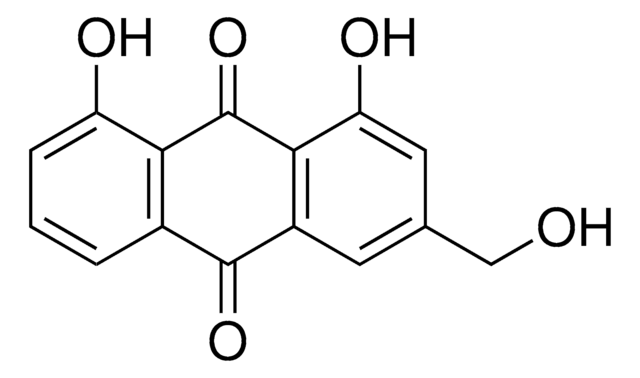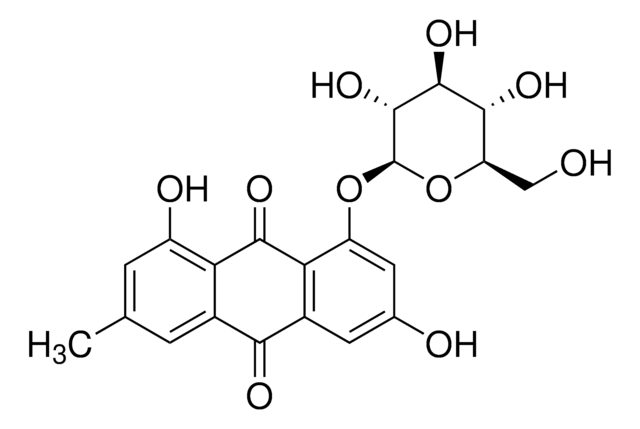A7687
Aloe-emodine
≥95% (HPLC)
Sinónimos:
1,8-Dihydroxy 3-hydroxymethylanthraquinone, 1,8-Dihydroxy-3-(hydroxymethyl)anthraquinone, 3-Hydroxymethylchrysazine, Rhabarberone
About This Item
Productos recomendados
biological source
plant root (Rheum palmatum)
assay
≥95% (HPLC)
form
powder
technique(s)
HPLC: suitable
color
yellow to brown
storage temp.
2-8°C
SMILES string
OCc1cc(O)c2C(=O)c3c(O)cccc3C(=O)c2c1
InChI
1S/C15H10O5/c16-6-7-4-9-13(11(18)5-7)15(20)12-8(14(9)19)2-1-3-10(12)17/h1-5,16-18H,6H2
InChI key
YDQWDHRMZQUTBA-UHFFFAOYSA-N
¿Está buscando productos similares? Visita Guía de comparación de productos
General description
Application
Biochem/physiol Actions
signalword
Warning
hcodes
pcodes
Hazard Classifications
Acute Tox. 4 Oral
Storage Class
11 - Combustible Solids
wgk_germany
WGK 1
flash_point_f
Not applicable
flash_point_c
Not applicable
ppe
dust mask type N95 (US), Eyeshields, Gloves
Certificados de análisis (COA)
Busque Certificados de análisis (COA) introduciendo el número de lote del producto. Los números de lote se encuentran en la etiqueta del producto después de las palabras «Lot» o «Batch»
¿Ya tiene este producto?
Encuentre la documentación para los productos que ha comprado recientemente en la Biblioteca de documentos.
Los clientes también vieron
Nuestro equipo de científicos tiene experiencia en todas las áreas de investigación: Ciencias de la vida, Ciencia de los materiales, Síntesis química, Cromatografía, Analítica y muchas otras.
Póngase en contacto con el Servicio técnico







